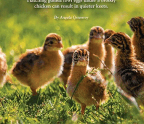Suet Blocks for Wild Birds

Most of our off-grid property in the foothills of the Olympic Mountains is made up of second-growth woods of fir and cedar. We have two large ponds, and no neighbors within two miles. The woods and wetlands here are home to many kinds of wildlife, including birds.
Since we moved here in 2006, we’ve identified nearly 70 species of wild birds, some of them transients who show up only briefly on their migration routes. Others make this land their year-round home. We’ve enjoyed observing them and learning about their habits and life cycles. Once we started feeding them, though, this learning process really took off. Our homemade suet blocks are particularly popular.
What Is Suet?
Technically, the large block of hard, dry-ish fat surrounding a cow’s kidneys (“leaf fat”) is suet. Rendered, it’s called “tallow.” Before mechanical refrigeration, rendering the fat of cows and pigs was a means of extending the shelf life of this important energy source, as well as making it easier to use.
Many wild birds will eat suet, especially in winter, when the ground is covered with snow and food is scarce. Suet is a great source of energy in cold weather.
Jays and woodpeckers are consistently attracted to suet
You’re reading a preview, subscribe to read more.
Start your free 30 days





